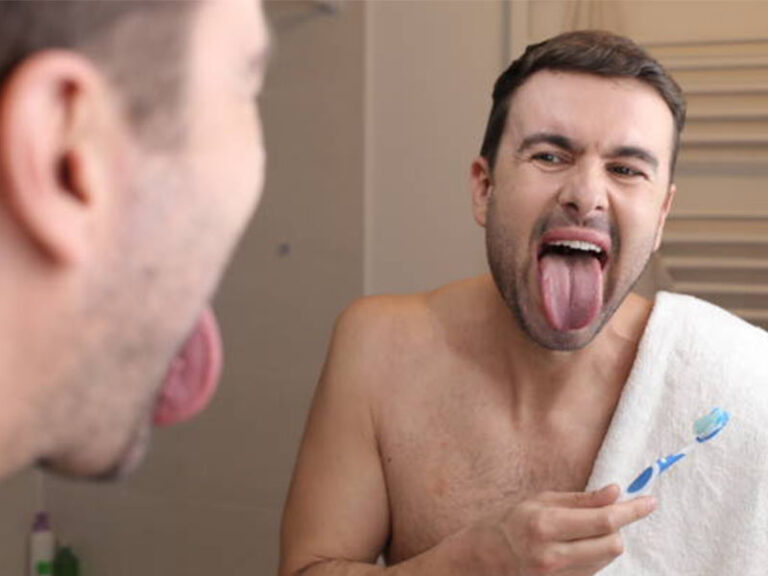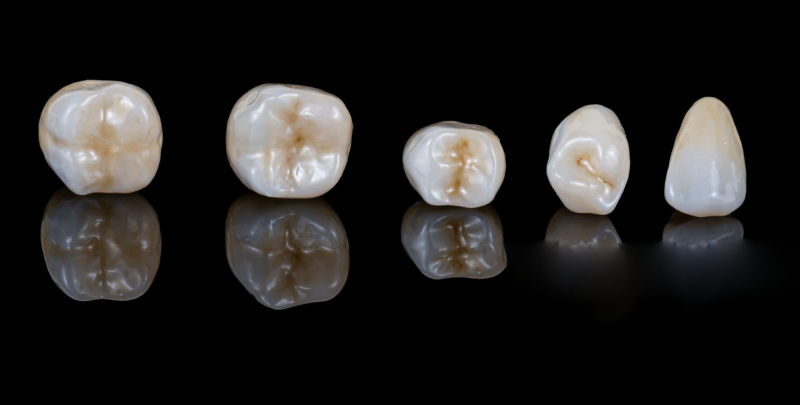
Why Root Canal Therapy Is So Important for Success
That constant pain in your tooth just won’t quit. Maybe your dentist told you that you need a root canal, and now your mind is going in circles. What’s a root canal, really? Will it work? Most of all, is saving your tooth really worth all that hassle? If you’re reading this, you care about your health—and you want real answers. That’s what you’ll get here.
Root canals sound scary, but they’re actually one of the most tried-and-true ways dentists help folks keep their natural teeth—pain-free and working just like new. Let’s clear up the confusion, knock down a few myths, and give you what you need to make a smart, confident choice.
Table of Contents
What Counts as a “Good” Root Canal?
Let’s start with the basics. Endodontics is the part of dentistry that deals with problems in the tooth’s pulp—the soft stuff inside that has nerves and blood vessels. When that stuff gets hurt or infected (from deep decay, cracks, or an accident), things can go wrong fast. That’s where root canals come in.
But what does a “good” root canal even mean? It’s not just about stopping pain. Dentists and researchers look for a few things:
- No pain or trouble: The tooth doesn’t hurt, swell up, or feel sore when you use it.
- Looks healthy on X-rays: The area around the root tip (called the periapical area) looks normal, with no signs of infection.
- You can use your tooth: You can eat, talk, and smile like usual, without worry.
- It lasts a long time: Years later, the tooth is still there, working fine.
Bottom line: A good root canal means you keep your tooth, you feel fine, and you don’t have new problems. But how do you get there?
The 3 Most Important Steps in Root Canal Therapy (and Why They Matter)
Not all root canals are done the same way. Fancy stuff and gadgets help, but what really matters is getting three big things right. You can think of these like legs on a strong table—miss one, and the whole thing can fall apart.
1. Getting Rid of All the Bad Stuff
Think of your tooth as a tree trunk, filled with twisting hallways. If germs get in deep, just scraping the top won’t fix it. Dentists need to:
- Find every tunnel: Back teeth often have extra, hidden branches (like the sneaky MB2 canal in top molars—easy to miss, but super important).
- Take out all the sick tissue: Even a bit of dead pulp left behind acts like garbage for germs. It’s like forgetting a banana peel behind the couch—sooner or later, it stinks up the whole room.
- Clean out bits and germs: Special tools shape and sweep the inside so nothing nasty gets left behind.
Why it’s important: If anything gets left in there, germs can come back. Missed spots are one of the most common reasons root canals fail.
2. Killing Leftover Germs
Even the best cleaning can’t reach every teeny space. Teeth have millions of tiny tubes where germs can hide.
- Washing the inside with chemicals: Dentists rinse the tooth with things like bleach—safe when it’s used right—to kill extra germs.
- Breaking up clumps of germs: Bacteria don’t just float; they stick together in tough “clumps” that resist cleaning. Good rinsing helps break these up.
Why it’s important: If germs survive, they can start a new infection later. Studies show that chemical cleaning is just as important as scraping out old tissue.
3. Sealing It Tight
After cleaning, the canals are sealed up—sort of like caulking around your windows. Dentists use:
- A rubbery filling: Usually gutta-percha, which plugs up the cleaned space.
- Thin sealers: Special glue fills tiny gaps to keep germs out and everything else in.
Why it’s important: A tight seal keeps out spit, germs, and even air. The better the seal, the longer your tooth will last.
Why Root Canals Sometimes Work—Or Don’t
Even when dentists do their best, not every root canal works out. Why not? A few things can change the outcome.
A. The Final Fix: Giving Your Tooth a Strong Top
Here’s a fact many people miss: The root canal is only part of the job. After it’s cleaned out, the tooth usually needs a crown—a tough cover that makes it strong again.
- Why not just a filling? After a root canal, teeth can get weak and easily break from chewing.
- A good crown protects against cracks and leaks: Without that cover, germs might sneak back in—or the tooth could split, even long after the root canal.
Studies show: If your tooth gets a good root canal and a good crown, it lasts twice as long as a root-canaled tooth without a proper crown.
B. Skill and Tools: Who Does It Matters
Should you go to a general dentist or a specialist (endodontist) for your root canal? It depends, but here’s what studies show.
- Endodontists have special gear: They use microscopes to see tiny things regular eyes can’t. 3D X-rays help them understand tricky roots.
- They handle tough cases: Re-doing a failed root canal or fixing back teeth full of twisty canals really takes experience.
- Success rates: Endodontists have up to 98% success in normal cases. General dentists are around 89%. The difference gets even bigger for harder teeth.
Don’t be shy—ask questions! Any good dentist will answer. If you’re sent to a specialist, it’s for your own good.
C. How Bad the Tooth Is Before Treatment
- Less infection, better results: If your tooth’s nerve is still alive but hurting, you have the best shot. If it’s dead and infection has spread, results are still good—but not as high.
- Act fast: Waiting just gives germs more time to wreck things. The sooner, the better.
Science says:
- No infection at the tip: 92-98% success.
- Active infection there: 78-86% success. Still high—but not perfect.
D. Keeping It Clean While Working
Using a rubber dam (a soft sheet that keeps out spit and germs) is the right way to do a root canal. If your dentist skips it, ask why.
E. What Can Go Wrong? Main Reasons for Failure
- Missed or uncleaned canals (especially in tough back teeth)
- Leaky fillings or crowns that let germs sneak in
- Lingering infection in hard-to-reach spots
- A crack running down the root
Regular dentist checkups catch problems early and help you fix them.

Root Canal Results: What the Numbers Say
Okay, so how likely is a root canal to work? Here’s the real-life score:
| What’s Being Looked At | What Research Shows | The Actual Numbers |
|---|---|---|
| Overall Success (Modern Root Canal) | Teeth work, don’t hurt, and look healthy on X-rays. | ~95% work well (AAE, many studies) |
| Specialist vs. General Dentist | Endodontists do better, especially for tough cases and molars. | Endodontist: ~98% General Dentist: ~89% |
| No Infection vs. Infection at Root | Results drop if the bone’s infected; fixing it early helps a lot. | With infection: ~78-86% Without: 92-98% |
| Good Crown or Filling | A strong crown or good closing makes a big difference. | Good job on both: 91%+ Really bad crown: 44% |
| Rubber Dam Use | Using a dam keeps things clean and helps results. | It’s the standard (best way) |
| Why They Fail | Most often because of missed canals, leaky caps, or cracks in the root. | (Lots of studies agree) |
Big point: With good tools and skills, and with a strong crown, root canals work about 95% of the time. That’s better than most medical procedures.
What Happens If You Skip a Root Canal?
Sometimes people wonder if pulling the tooth is quicker, cheaper, or less scary. Let’s get real about that choice.
A. You’ll Lose the Tooth
- No root canal = tooth must come out. There’s just no way around it once infection gets into your tooth’s pulp and it hurts or swells.
B. What Are You Really Losing?
Losing a tooth isn’t just about a gap:
- Other teeth move: They drift and mess up your bite, which can make eating tougher.
- Jaw bone shrinks: Without the tooth root, your jaw bone thins out.
- Looks change: Missing many teeth can make your face look sunken and older.
C. The Costs Add Up
- Replacing a tooth is expensive: Implants, bridges, and dentures cost more than saving the tooth with a root canal.
- More dental problems: Not filling the gap can lead to even more dental trouble later.
D. The Infection Could Spread
- A bad infection can move into your jaw, face, or even (though rarely) to your heart or other parts of your body. Root canals stop this before it gets serious.
Should You Get a Root Canal? Is It a Good Idea for You?
Root canals aren’t the answer for every single person. But for millions, they’re the best way to keep a natural tooth.
Root Canal Is Right for You If…
- You have a tooth that’s badly decayed, cracked, or has a failed filling—and the dentist says it’s infected but can still be saved.
- The bone around your tooth is mostly healthy.
- You want to keep your own tooth—it looks, feels, and works better than “fake” replacements.
Maybe Not If…
- The tooth is cracked straight down the root or can’t be fixed, even with a crown.
- The bone is too damaged.
- You have health problems that make dental infection very risky. (Talk to your dentist.)
What If a Root Canal Fails?
If your first root canal fails (for example, if a canal was missed or a filling leaked), most teeth can be saved by doing it again with a specialist. New 3D X-rays find hidden spots old tools missed.
Main Points and What to Do Next
Here’s what you need to remember:
- Root canals work about 95% of the time when done right. The keys: remove all infection, clean well, seal tight.
- You need a crown afterwards! Even a great root canal can’t keep an unprotected tooth safe for long.
- Seeing a specialist for tricky teeth helps. Ask the dentist if a referral makes sense.
- Act soon for better results. Waiting just makes things harder.
- Pulling teeth causes more dental and even general health issues. Saving your tooth almost always wins for your health and your wallet.
Next steps? Don’t be nervous about asking your dentist:
- Do you use a microscope and a rubber dam?
- Will my tooth get a crown after the root canal?
- Will a specialist be involved if my tooth is tricky?
Remember: Saving your real tooth—working and pain-free—is almost always possible with good root canal work. That means a healthy mouth, a great smile, and one less thing to keep you up at night.
Root Canal Therapy: Questions People Ask
1. How often do root canals work?
With modern tools and a final crown, root canals work about 95% of the time for pain-free, usable teeth. For tricky cases, specialists do even better.
2. Do I always need a crown after a root canal?
Most of the time, yes—especially for back teeth. Front teeth don’t always need a crown if they’re still strong and don’t get too much chewing force, but check with your dentist.
3. How do I know if my root canal worked?
A good root canal means:
- No pain or swelling,
- You can chew fine,
- Your dentist’s X-ray looks good with healthy bone,
- Best of all, you have a strong crown on top.
4. Is it better to get a root canal or just pull the tooth?
Almost every time, it’s better to save the tooth. Implants and bridges are good if you need them, but your own tooth usually beats any replacement.
5. What if my root canal fails?
A second try with a specialist saves many teeth. Most failures happen because of missed canals or leaks, and modern tech can find and fix these.

Quick Tips Before You Leave
- Don’t ignore a tooth that’s sore or sensitive for more than a few days. The sooner you see your dentist, the better your chance to save it.
- Ask your dentist if they use the latest tools like microscopes and 3D X-rays. These make a real difference.
- Book your crown appointment right after the root canal. Don’t wait too long!
- Keep brushing, flossing, and seeing your dentist for regular checkups. Good habits help your teeth last for decades.
Want to Read More?
- American Association of Endodontists (AAE): aae.org
- Sjogren, U., et al. (International Endodontic Journal, 1997)
- Ray, H. A., & Trope, M. (Journal of Endodontics, 1995)
- Alley, B. S., et al. (JOE, 2004)
- Ng, Y. L., et al. (International Endodontic Journal, 2011)
- Goldfein, J., et al. (Journal of Endodontics, 2013)
- Mayo Clinic, WebMD, Cleveland Clinic
When you’re unsure, remember this: A root canal done well, with a good crown, is one of the best ways to keep your mouth healthy. It relieves pain and helps you keep your own smile for life. And isn’t that what it’s all about?
Checked by Dr. Jane Doe, DDS (Endodontics)
Got questions or want a gentle check-up? Call Smile Health Clinic.








